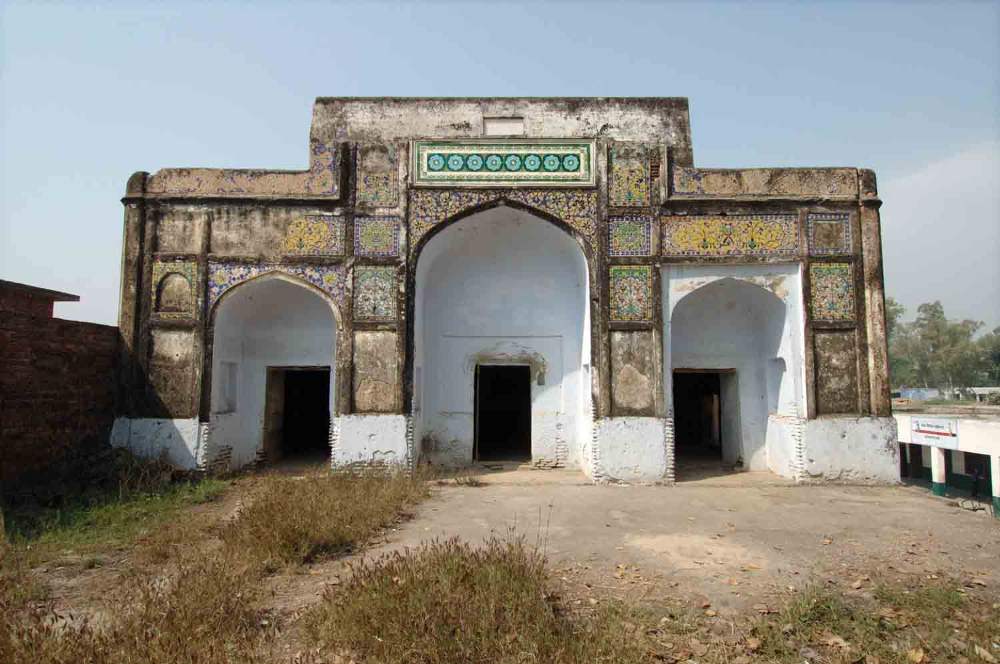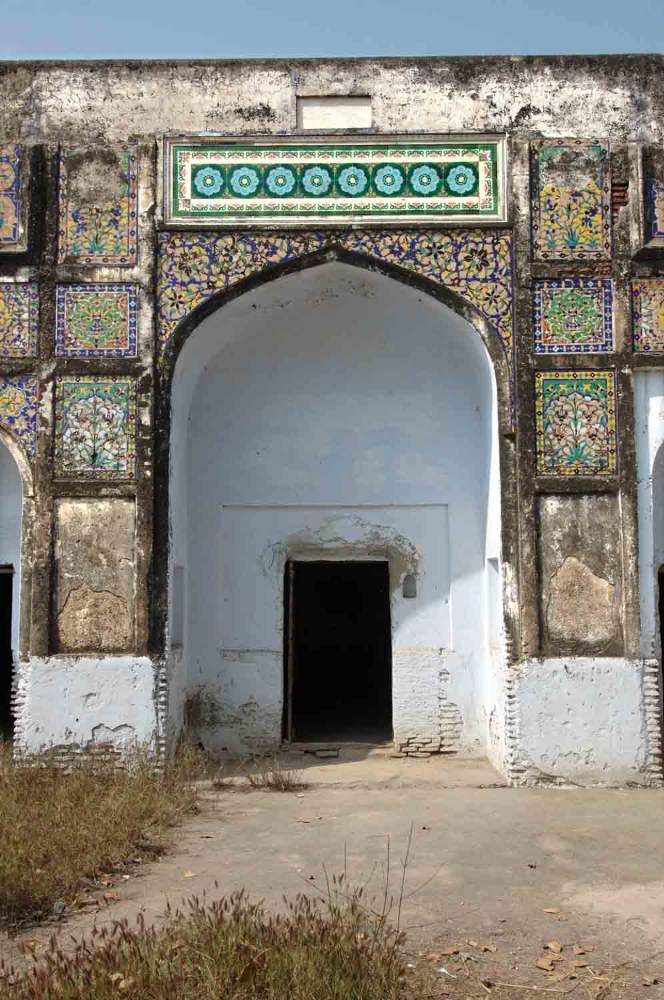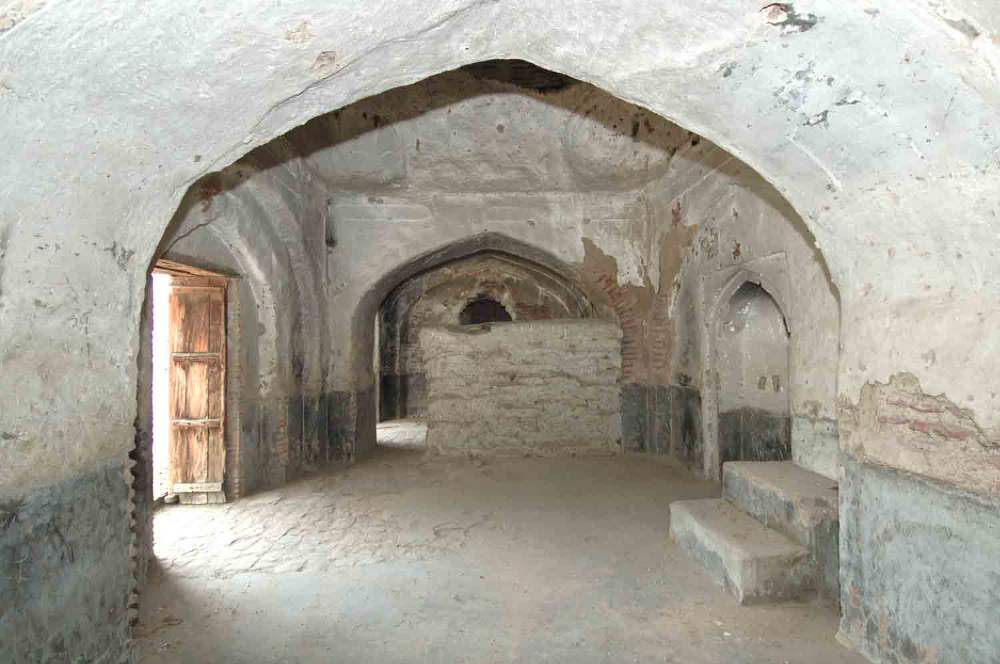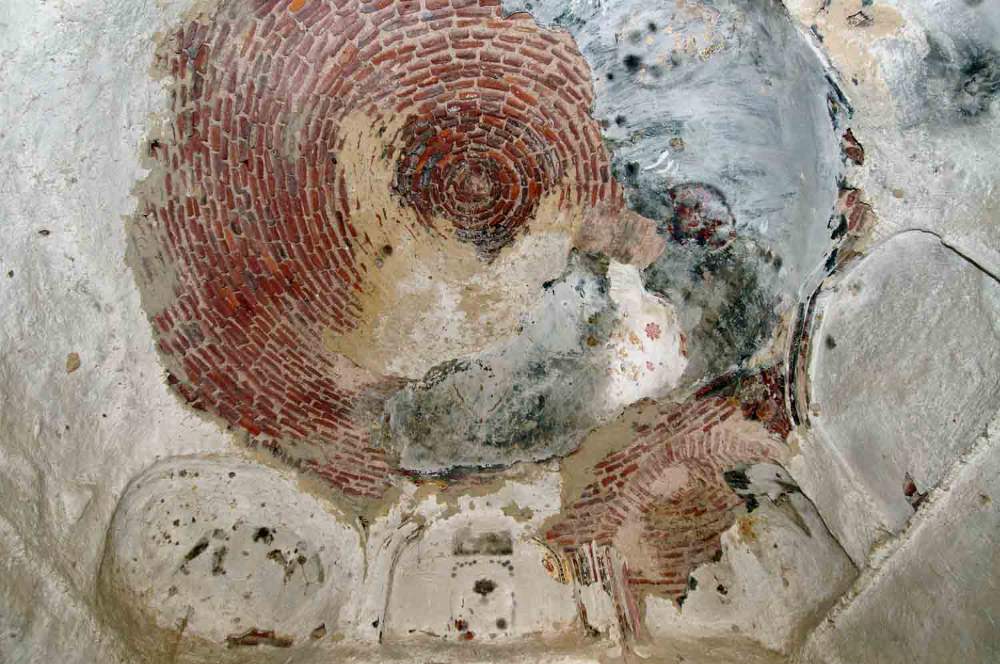



Tucked away in the village of Rajatal, Tarn Taran, this 16th-century mosque stands as a testament to the architectural grandeur of the Mughal era. Built during a time when Mughal emperors were known for their artistic patronage, the mosque reflects the intricate detailing and robust construction techniques of the period. The mosque, primarily made of bricks and mortar, showcases classic Mughal architectural features such as multi-arched entrances, crowned with detailed floral and geometric tile work. The façade, though weathered by time, still displays vibrant hues and decorative patterns, particularly around the main entrance. The structure’s simplicity is balanced by the intricate craftsmanship on its exterior walls, where tiles of varying colors create a mesmerizing effect. The three main doorways symbolize the mosque’s significance as a space of spiritual congregation. The middle arch, the grandest of all, leads into a space that once echoed with the voices of worshippers. The mosque, though aged, continues to exude a sense of dignity and grace. The slight deterioration seen in the plaster and paint is a natural result of centuries exposed to the elements, yet it adds an authentic rustic charm. This mosque was built in the 16th century, during the reign of the Mughal dynasty, a period known for its rich contributions to Islamic architecture. The mosque would have served as a central place of worship for the local Muslim community. Its design and structure were likely influenced by contemporary Mughal mosques, which were characterized by grandeur yet remained accessible to the common people. For tourists and architecture enthusiasts alike, this 16th-century mosque in Rajatal is a hidden gem. It serves as a reminder of Punjab’s rich Mughal heritage, offering a glimpse into the past through its enduring beauty and peaceful surroundings. As you stand before the mosque’s ornate façade, you can’t help but feel transported to an era when faith and art coalesced in magnificent harmony.